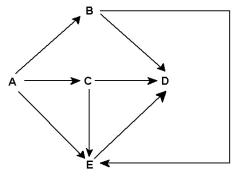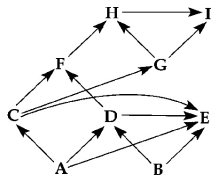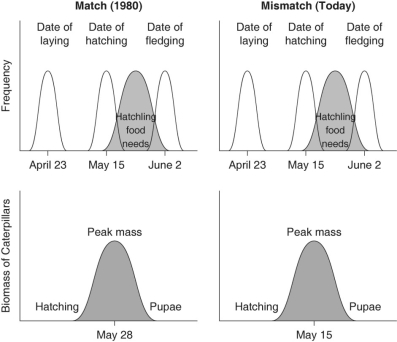A) follow whale migrations in order to determine where most nutrients are.
B) observe Antarctic Ocean productivity from year to year to see if it changes.
C) experimentally enrich some areas of the ocean and compare their productivity to that of untreated areas.
D) compare nutrient concentrations between the photic zone and the benthic zone in various locations
E) contrast nutrient uptake by autotrophs in oceans of different temperatures.
Correct Answer

verified
Correct Answer
verified
Multiple Choice
Which of the following is caused by excessive nutrient runoff into lakes?
A) depletion of atmospheric ozone
B) turnover
C) biological magnification
D) greenhouse effect
E) eutrophication
Correct Answer

verified
Correct Answer
verified
Multiple Choice
The producers in aquatic ecosystems include organisms in which of the following groups?
A) cyanobacteria
B) algae
C) plants
D) photoautotrophs
E) A, B, C, and D are all correct
Correct Answer

verified
Correct Answer
verified
Short Answer
Use Figure 55.2 to answer the following questions. Examine this food web for a particular terrestrial ecosystem. Each letter is a species. The arrows represent energy flow.
 Figure 55.2
-Which species is most likely the decomposer?
Figure 55.2
-Which species is most likely the decomposer?
Correct Answer

verified
Correct Answer
verified
Multiple Choice
Which of the following is True of detrivores?
A) They recycle chemical elements directly back to primary consumers.
B) They synthesize organic molecules that are used by primary producers.
C) They convert organic materials from all trophic levels to inorganic compounds usable by primary producers.
D) They secrete enzymes that convert the organic molecules of detritus into CO2 and H₂O.
E) Some species are autotrophic, while others are heterotrophic.
Correct Answer

verified
Correct Answer
verified
Multiple Choice
Refer to Figure 55.1, a diagram of a food web, for the following questions. (Arrows represent energy flow and letters represent species.)
 Figure 55.1
-If this were a terrestrial food web, the combined biomass of C + D would probably be
Figure 55.1
-If this were a terrestrial food web, the combined biomass of C + D would probably be
A) greater than the biomass of A.
B) less than the biomass of H.
C) greater than the biomass of B.
D) less than the biomass of A + B.
E) less than the biomass of E.
Correct Answer

verified
Correct Answer
verified
Multiple Choice
Nitrogen is available to plants only in the form of
A) N2 in the atmosphere.
B) nitrite ions in the soil.
C) uric acid from animal excretions.
D) amino acids from decomposing plant and animal proteins.
E) nitrate ions in the soil.
Correct Answer

verified
Correct Answer
verified
Multiple Choice
Which of the following properly links the nutrient to its reservoir?
A) Nitrogen ionic nitrogen in the soil
B) Water atmospheric water vapor
C) Carbon dissolved CO2 in aquatic ecosystems
D) Phosphorous sedimentary rocks
E) A, B, C, and D are all correct
Correct Answer

verified
Correct Answer
verified
Multiple Choice
Which of the following are responsible for the conversion of most organic material into CO2, which can be utilized in primary production?
A) autotrophs
B) detrivores
C) primary consumers
D) herbivores
E) carnivores
Correct Answer

verified
Correct Answer
verified
Multiple Choice
The Hubbard Brook watershed deforestation experiment yielded all of the following results except that
A) most minerals were recycled within a forest ecosystem.
B) the flow of minerals out of a natural watershed was offset by minerals flowing in.
C) deforestation increased water runoff.
D) the nitrate concentration in waters draining the deforested area became dangerously high.
E) calcium levels remained high in the soil of deforested areas.
Correct Answer

verified
Correct Answer
verified
Short Answer
Use Figure 55.2 to answer the following questions. Examine this food web for a particular terrestrial ecosystem. Each letter is a species. The arrows represent energy flow.
 Figure 55.2
-Species C is toxic to predators. Which species is most likely to benefit from being a mimic of C?
Figure 55.2
-Species C is toxic to predators. Which species is most likely to benefit from being a mimic of C?
Correct Answer

verified
Correct Answer
verified
Short Answer
Use Figure 55.2 to answer the following questions. Examine this food web for a particular terrestrial ecosystem. Each letter is a species. The arrows represent energy flow.
 Figure 55.2
-Which species is most likely an omnivore?
Figure 55.2
-Which species is most likely an omnivore?
Correct Answer

verified
Correct Answer
verified
Multiple Choice
Use the information below to answer the following questions.
Flycatcher birds that migrate from Africa to Europe feed their nestlings mostly with moth caterpillars. The data presented show the mean dates of egg laying, hatching, and fledging of flycatcher young, and the 1980 and 2000 peak mass of caterpillars.
 Figure 55.4
-The most likely cause for the shift in caterpillar peak mass is
Figure 55.4
-The most likely cause for the shift in caterpillar peak mass is
A) pesticide use.
B) earlier migration returns of flycatchers.
C) an innate change of biological clock by caterpillars.
D) global warming.
E) a decrease in the amount of calcium in the ecosystem.
Correct Answer

verified
Correct Answer
verified
Multiple Choice
When levels of CO2 are experimentally increased, C3 plants generally respond with a greater increase in productivity than C4 plants. This is because
A) C3 plants are more efficient in their use of CO2.
B) C3 plants are able to obtain the same amount of CO2 by keeping their stomata open for shorter periods of time.
C) C4 plants don't use CO2 as their source of carbon.
D) C3 plants are more limited than C4 plants by CO2 availability because of transpirational water loss.
E) C3 plants have special adaptations for CO2 uptake, such as larger stomata.
Correct Answer

verified
Correct Answer
verified
Multiple Choice
The high levels of pesticides found in birds of prey is an example of
A) eutrophication.
B) predation.
C) biological magnification.
D) the green world hypothesis.
E) chemical cycling through an ecosystem.
Correct Answer

verified
Correct Answer
verified
Multiple Choice
The total biomass of photosynthetic autotrophs present in an ecosystem is known as
A) gross primary productivity.
B) standing crop.
C) net primary productivity.
D) secondary productivity.
E) trophic efficiency.
Correct Answer

verified
Correct Answer
verified
Multiple Choice
In terms of nutrient cycling, why does timber harvesting in a temperate forest cause less ecological devastation than timber harvesting in tropical rain forests?
A) Trees are generally smaller in temperate forests, so fewer nutrients will be removed from the temperate forest ecosystem during a harvest.
B) Temperate forest tree species require fewer nutrients to survive than their tropical counterpart species, so a harvest removes fewer nutrients from the temperate ecosystem.
C) The warmer temperatures in the tropics influence rain forest species to assimilate nutrients more slowly, so tropical reforestation is much slower than temperate reforestation.
D) There are far fewer decomposers in tropical rain forests so turning organic matter into usable nutrients is a slower process than in temperate forest ecosystems.
E) Typical harvests remove up to 75% of the nutrients in the woody trunks of tropical rain forest trees, leaving nutrient-impoverished soils behind.
Correct Answer

verified
Correct Answer
verified
Multiple Choice
How is it that satellites can detect differences in primary productivity on Earth?
A) Photosynthesizers absorb more visible light in the 350-750 wavelengths.
B) Satellite instruments can detect reflectance patterns of the photosynthesizers of different ecosystems.
C) Sensitive satellite instruments can measure the amount of NADPH produced in the summative light reactions of different ecosystems.
D) By comparing the wavelengths of light captured and reflected by photosynthesizers to the amount of light reaching different ecosystems.
E) By measuring the amount of water vapor emitted by transpiring photosynthesizers.
Correct Answer

verified
Correct Answer
verified
Multiple Choice
You have a friend who is wary of environmentalists' claims that global warming could lead to major biological change on Earth. Which of the following statements can you truthfully make in response to your friend's suspicions?
A) We know that atmospheric carbon dioxide has increased in the last 150 years.
B) Through measurements and observations, we know that carbon dioxide levels and temperature fluctuations were directly correlated even in prehistoric times.
C) Global warming could have significant effects on United States agriculture.
D) Sea levels will likely rise, displacing as much as 50% of the world's human population.
E) A, B, C, and D are all correct
Correct Answer

verified
Correct Answer
verified
Multiple Choice
To recycle nutrients, the minimum an ecosystem must have is
A) producers.
B) producers and decomposers.
C) producers, primary consumers, and decomposers.
D) producers, primary consumers, secondary consumers, and decomposers.
E) producers, primary consumers, secondary consumers, top carnivores, and decomposers.
Correct Answer

verified
Correct Answer
verified
Showing 41 - 60 of 79
Related Exams